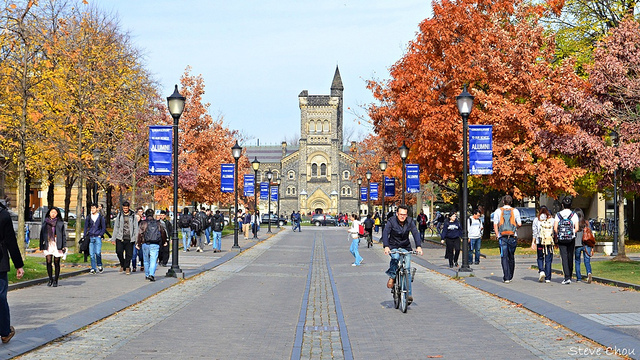A version of this paper was read at a seminar on “Racism in Academia” held at The Centre of Excellence for Research (CERIS) on Immigration and Settlement, York University, on November 21, 2012.
During the 2010 Metropolis conference held in Montreal, Dr. Luin Goldring, Director of CERIS asked me to suggest a topic for a university seminar. I immediately proposed the topic “Racism in Academia,” as I had written on the same issue a few years back.
My observations and inferences were based on the real experiences of Dr. Shiva Sadeghi, Faculty Associate and senior researcher at the University of Toronto. She was very disappointed, discouraged and disgusted with her job experiences and the painful realities faced by some communities on campus.
Her story reflected the truth that Canadian society is not always receptive to immigrants’ different perceptions. When knowledge is not acknowledged and performance is not appreciated, it is deeply felt.
Racism is not new to Canada. But in the last 40 years with the landing of new waves of non-Caucasian immigrants from Asia, Africa and the Middle East, racism has taken a new direction, confronting new targets. Race and colour lines are sometimes very clearly visible. An undercurrent of whiteness and Eurocentric thinking in Canadian culture does not seem ready to accept the changing complexion of the Canadian nation.
This situation raises vital questions.
Is multiculturalism a political strategy to gain votes? Or is it like an eloquent sermon preached loudly but practiced poorly?
What actions are necessary to fight discriminatory behaviour and make our academies knowledge-based and loving institutions?
Universities are seats of learning, where characters are carved and minds are moulded. We should remember that sowing seeds of hate and division here is not only painful, but also alarming, because it may slowly creep into all segments of society.
Immigrants come here in search of a bright future, but not at the cost of compromising their cultural values.
A famous Jewish saying says:
“The best cure for baseless hatred is baseless love.”
The real challenge is, how can we prevent racism in the academy? How can we make sure that all racial groups are treated fairly and not judged based on face, faith and race?
Researcher Carol Tator writes in her book Racism in the Canadian University:
“Racism is at the bottom of the list in terms of administration looking at forms of oppression and there’s only a broad recognition of individual hate crimes, but nothing above the level of the individual.”
She adds that research on racism and other forms of oppression are commonly undervalued, which can be a significant barrier to faculty tenure and promotion. At the same time, visible minority faculty members may be asked to sit on committees or mentor students — not because of their expertise or their interest in the subject — but because administrators want their faces in prominent positions in order to present an image of equity.
In a study conducted by Dr. Enakashi Dua of York University, based on interviews with 14 human rights or equity officers at various Canadian universities, she concludes that “the most powerful barrier to implementing policies to control racism is the lack of willingness of the senior administrators to address systematic and structural racism.”
Recommendations for addressing racism in the academy
1. Policies should be made and monitored by people who have a broader vision, a fair approach, and good judgment — and on top of that, a willingness to resolve the issue.
2. When it comes to designing policies and plans to fight racism, immigrants and visible minorities will be watching closely to establish whose voice is heard and whose voice is ignored.
3. A poisoned classroom and work environment is a curse; we should create an inclusive environment to get the best from the talent of our faculty and students.
4. Families are the best teachers of our children’s values, attitudes and behaviours. Parents from various communities can play an important role by socializing our children together, so they learn to respect cultural differences, which will be reflected in all areas of life.
5. Adding a more comprehensive study of diverse cultures and equity studies at various levels of education may help students to understand one another and reduce racial tensions.
6. We are all Canadians. We need better governance to improve the situation — to cultivate more acceptance and understanding, to bring the different communities closer.
I think the best solution lies in a famous seventh century saying of Imam Ali, the first imam and fourth Caliph of Muslims. Nearly 1,400 years ago he said:
“We have two kinds of relationships with all other human beings: either we are brethren in faith or we are brethren in humanity.”
I believe the latter is the strongest human connection — we are all brethren in humanity and it is the key to building a unified and strong Canadian nation.
Mehdi Rizvi is a former member of the Community Editorial Board, Toronto Star and an affiliate of the Center of Excellence for Research on Immigration and Settlement, which is a consortium of three Toronto universities. His column appears in rabble each month.
Photo: Steve Chou/flickr



